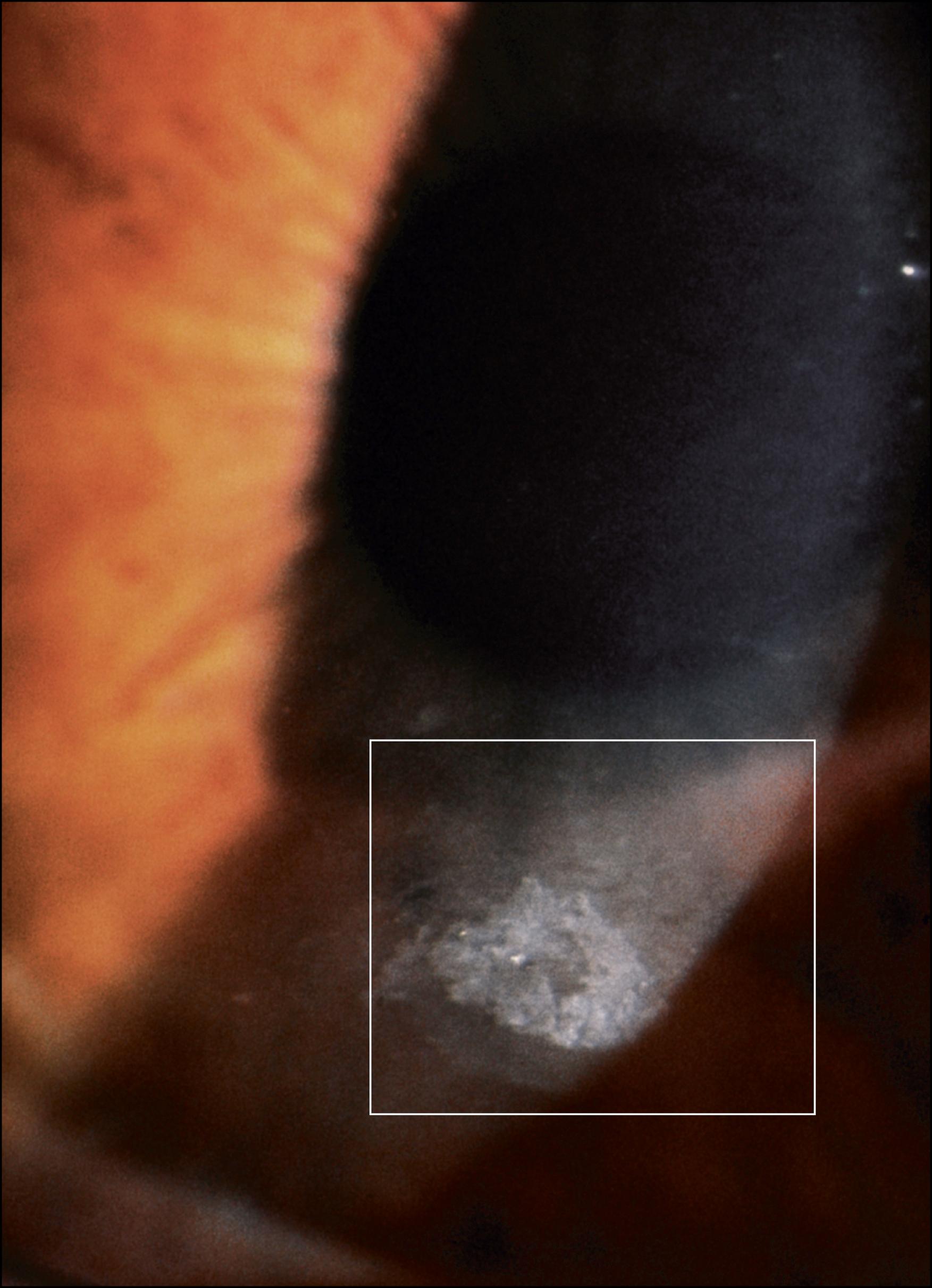Physical Address
304 North Cardinal St.
Dorchester Center, MA 02124
Corneal micropuncture, diamond burr, and phototherapeutic keratectomy are useful techniques for the treatment of recurrent corneal erosions.
Ethylenediaminetetraacetic acid (EDTA) application for chelation and scraping is an effective treatment for band keratopathy.
Selective epithelial debridement can be used for the treatment of partial limbal stem cell deficiency.
Nodulectomy techniques are a simple and effective method for treatment of Salzmann nodular degeneration.
Superior limbic keratitis can be managed with a variety of surgical treatment options.
Conjunctival excision is effective for symptomatic conjunctivochalasis.
Curettage of molluscum contagiosum lesions for treatment of related chronic follicular conjunctivitis is simple and effective.
Superficial corneal and conjunctival diseases are frequently encountered in clinical practice. The focus of this chapter will be on those disorders that can be treated successfully with minor surgical procedures, and the techniques for these procedures are described.
Recurrent corneal erosion syndrome is due to weakly adherent corneal epithelium resulting in intermittent occurrences of spontaneous epithelial defects. Episodes are characterized by sudden onset of eye pain, typically upon waking in the morning or during the night, with associated symptoms of tearing, redness, and photophobia. The pain ranges from mild to severe, and the length of episodes can vary from minutes to days. It was first described as “intermittent neuralgic vesicular keratitis” by Hansen in 1872. Pathogenesis of the defective adhesion of the corneal epithelial basement membrane to the underlying Bowman layer and stroma is thought to be due to either abnormal adhesion complexes, including abnormal hemidesmosomes and increased activity of matrix metalloproteinases (MMP-2 and MMP-9), or to a reduplication of the basement membrane itself. , Predisposition to developing recurrent corneal erosions often occurs in patients with a prior history of a traumatic corneal abrasion or an underlying corneal dystrophy, especially epithelial basement membrane dystrophy (EBMD). Literature also suggests there may be an association between keratorefractive surgery and the development of recurrent corneal erosions. , , The diagnosis is frequently made by clinical history and the presence of a ragged, grayish area of staining epithelium ( Fig. 142.1 ) on slit lamp examination, most frequently found in the inferior, paracentral cornea , ; however, even with inferior erosions there may also be superior perilimbal epitheliopathy. Epithelial microcysts may be present in patients with EBMD. Loosely adherent epithelium can be identified at the slit lamp by touching the tip of a moistened cellulose sponge to a topically anesthetized cornea, causing it to be pushed into folds easily. The diagnosis of more subtle cases of recurrent erosion syndrome can be more difficult. A fine slit beam examination may reveal subtle, residual brown granularity of the stroma (brawny edema), which persists briefly after restoration of epithelial integrity. However, at times even the best observer will discern no visible corneal abnormalities on slit lamp examination, because the epithelial defect has resolved in the time between the occurrence of the erosion and the examination of the patient. Anterior segment optical coherence tomography (AS-OCT) has been used in patients with acute and chronic erosion to document changes in epithelium, Bowman layer, and anterior stroma. This technology can also be used to help target the appropriate area for treatment.

Recurrent erosion syndrome can be frustrating when encountered in clinical practice because of its occasional resistance to available treatments and prolonged course. A stepwise treatment approach is commonly implemented for recurrent erosions, with both medical and surgical options available. Prophylactic antibiotic drops are used when epithelial defects are present. Prevention of erosion formation typically starts with lubrication of the ocular surface, with hypertonic saline ointment at bedtime for a period of several months. The rationale for this treatment derives from the concept of relative nocturnal hypotonicity of the preocular tear film due to reduced tear evaporation. This results in a relative increase in corneal epithelial edema and a consequent reduction in epithelial adhesion. The hyperosmotic ointment serves to prevent erosions by keeping the eye lubricated during rapid eye movements and when opening the eyes in the morning and increasing the tonicity of the preocular tear film. The hypertonic ointment must be used consistently for at least 6 months to induce re-formation of normal attachment complexes. Currently available hyperosmotic ointments include sodium chloride 5% (Muro-128, Bausch and Lomb). Additional medical agents for treatment of recurrent erosions include the combination of oral doxycycline and topical corticosteroids, , thought to work via inhibition of MMP-9. Autologous serum eye drops have also been tried to increase lubrication and provide growth factors. , Placement of a bandage soft contact lens (BSCL) may be an effective treatment if used for several months following an acute erosion. However, there is increased risk of microbial keratitis associated with contact lens use. Patching during acute erosions in conjunction with lubricant/antibiotic agents is another effective short-term treatment. In cases where medical treatment alone fails, various surgical options can be pursued to prompt the formation of new and stronger adhesion complexes. The surgical approach is determined by the frequency and severity of erosions, the presence of concomitant dystrophies or other diseases, the etiology and location of the erosions, and the patient’s needs and desires.
Become a Clinical Tree membership for Full access and enjoy Unlimited articles
If you are a member. Log in here